 "ttyymmnn" (ttyymmnn)
"ttyymmnn" (ttyymmnn)
07/01/2016 at 12:35 • Filed to: planelopnik, planelopnik history
 6
6
 4
4
 "ttyymmnn" (ttyymmnn)
"ttyymmnn" (ttyymmnn)
07/01/2016 at 12:35 • Filed to: planelopnik, planelopnik history |  6 6
|  4 4 |
Welcome to This Date in Aviation History , getting of you caught up on milestones, important historical events and people in aviation from June 29 - July 1.
!!! UNKNOWN CONTENT TYPE !!!

June 30, 1968 – The first flight of the Lockheed C-5 Galaxy. “An army travels on its stomach.” There is some debate as to whether it was !!!error: Indecipherable SUB-paragraph formatting!!! or !!!error: Indecipherable SUB-paragraph formatting!!! who made that famous observation on the logistics of warfare, but it is a truism that lasted from the earliest days of war into our modern jet age. But an army doesn’t need just beans and bullets, it also needs to get to the battle. WWII demonstrated the need for truly global transport, and following the war, the US Air Force entered the age of strategic jet transport with the !!!error: Indecipherable SUB-paragraph formatting!!! in 1963. But no sooner had that remarkable aircraft made its first flight than the Air Force began looking for something even bigger, and what it ended up with was one of the largest aircraft in the world. Work on the strategic heavy-lifter began in 1961, when aircraft manufacturers took part in a program that would develop an aircraft to serve as both a replacement for the !!!error: Indecipherable SUB-paragraph formatting!!! turboprop cargo aircraft and a complement to the smaller C-141. The Air Force needed something that could carry larger vehicles and equipment, have a maximum takeoff weight (MOT) of 600,000 pounds and could still operate from the same runways used by the Starlifter. That requirement was then amended to an aircraft that could deliver a payload of 125,000 pounds a distance of 8,000 miles, essentially double the payload for half the distance of the original requirement. Boeing, Douglas and Lockheed all submitted proposals in 1964, and GE began work to develop an engine that was capable of moving a plane with a 700,000 pound MOT. Lockheed won the contract. Though the Boing design was deemed better than Lockheed’s, Lockheed won the contract, in large part because they were the lower bidder. The Air Force awarded a production contract to Lockheed in 1965, and the !!!error: Indecipherable SUB-paragraph formatting!!! high-bypass turbofan was chosen at the same time. Following its maiden flight, the first production aircraft were delivered in December 1969, and 81 C-5As were delivered by the end of 1973. The new heavy lifter immediately showed its mettle by carrying men and materiel to Europe and Southeast Asia, and its range was expanded by the addition of in-flight refueling capabilities. It’s low cargo deck, with doors in both front and back that allowed drive-through loading, and its wide girth, meant that the Military Airlift Command could now transport any vehicle in the US inventory, and twice as much payload as the C-141. It can accommodate two !!!error: Indecipherable SUB-paragraph formatting!!! main battle tanks plus two !!!error: Indecipherable SUB-paragraph formatting!!! , or up to six !!!error: Indecipherable SUB-paragraph formatting!!! attack helicopters. The main deck can transport up to 270 troops. The Galaxy proved to be a cargo workhorse, but all that heavy lifting meant that the wings needed replacing by the 1980s to extend their service life, and the C-5 AMP and C-5M Super Galaxy projects are working to modernize the remaining fleet and keep them flying until at least 2040. (US Air Force photo)
!!! UNKNOWN CONTENT TYPE !!!

July 1, 1872 – The birth of Louis Blériot. The opening of the 20th century was an extremely exciting time in the history of aviation. The Wright Brothers made their historic flight in 1903, and while they are recognized as being the first, developments in Europe were progressing rapidly to catch up to them. In 1906, Brazilian aviation pioneer !!!error: Indecipherable SUB-paragraph formatting!!! made a public flight his !!!error: Indecipherable SUB-paragraph formatting!!! , and the next year, !!!error: Indecipherable SUB-paragraph formatting!!! made the first flight of his !!!error: Indecipherable SUB-paragraph formatting!!! . Despite the news surrounding the successful controlled flights of the Wright Brothers, many in Europe remained skeptical of their achievements. To prove the doubters wrong, Wilbur Wright traveled to Europe in 1908 and made a series of demonstration flights near Le Mans, demonstrating just how far they had come. He flew circles and figure-eights that stunned their French audience, and one of those in attendance that day was Louis Blériot. Though Blériot is best known today for his pioneering work in aviation, he made his money as an inventor and engineer. Following his education at the prestigious École Centrale in Paris, and compulsory military service with an artillery regiment, Blériot went to work for an electrical engineering firm, where developed the first practical headlamp for automobiles. The money he earned from this invention would later fund his foray into aviation. Blériot began with attempts at building !!!error: Indecipherable SUB-paragraph formatting!!! , but those proved unsuccessful. Then he met Voisin, and the two agreed to work together. They formed the Ateliers d’ Aviation Edouard Surcouf, Blériot et Voisin , but the partnership was unsuccessful, and Blériot realized that he was still far from his goal. After witnessing a successful flight by Santos-Dumont, Blériot dissolved his partnership with Voisin and struck out on his own, experimenting with different configurations but focusing on the development of the world’s first powered monoplane, creating the !!!error: Indecipherable SUB-paragraph formatting!!! , flew on March 21, 1907. The plane only made short flights, and was damaged beyond repair after its third flight, but Blériot was on his way. Numerous modifications and experiments followed, and his !!!error: Indecipherable SUB-paragraph formatting!!! , with a large forward wing and smaller tail wing, would establish the fundamental layout of almost all aircraft to follow. The controls of the Blériot VII featured tail surfaces that could be moved together or separately, forming the predecessor to the elevators, ailerons and elevons used in modern aviation. By now, Blériot was recognized as an important innovator, but his greatest notoriety came from his successful first crossing of the English Channel. On July 25, 1909, Blériot took off from Calais at 4:41 am in his !!!error: Indecipherable SUB-paragraph formatting!!! monoplane, which was powered by a 25-horsepower, 3-cylinder !!!error: Indecipherable SUB-paragraph formatting!!! . After a 36-minute flight, he made a hard landing in Dover and claimed a £1000 prize. The feat brought him fame and helped the success of his aircraft manufacturing business, leading to 100 orders for his Type XI, and more than 900 orders for aircraft during WWI. Following the war, Blériot’s manufacturing work continued, and he was present at Le Bourget Airport in 1927 to welcome !!!error: Indecipherable SUB-paragraph formatting!!! to Paris. Blériot died in 1936 at the age of 64 and, in his honor, the !!!error: Indecipherable SUB-paragraph formatting!!! established the Louis Blériot Medal to recognize !!!error: Indecipherable SUB-paragraph formatting!!! set in speed, altitude and distance. (Photo author unknown)
!!! UNKNOWN CONTENT TYPE !!!
Short Take Off
!!! UNKNOWN CONTENT TYPE !!!

June 29, 2011 – KLM becomes the world’s first airline to operate a flight using biofuel. Aviation currently represents 2% of global !!!error: Indecipherable SUB-paragraph formatting!!! emissions, a number that is !!!error: Indecipherable SUB-paragraph formatting!!! in the coming years, having already accounted for an 87% rise in greenhouse gas emissions in Europe alone between 1990-2006. One method sought to reduce these emissions is through the use of !!!error: Indecipherable SUB-paragraph formatting!!! and, following successful aviation industry tests beginning 2007, KLM became the first to fly revenue passengers from Amsterdam to Paris in a !!!error: Indecipherable SUB-paragraph formatting!!! powered by used cooking oil. Work is continuing in the field in the hopes of producing a sustainable source of fuel that does not compete with the production of food or consume too much agricultural land. (Photo via KLM)
!!! UNKNOWN CONTENT TYPE !!!
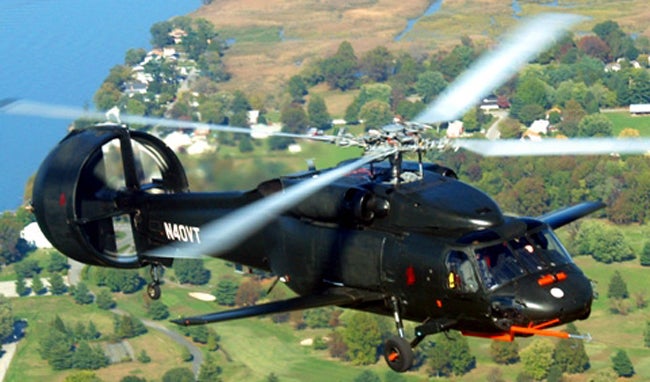
June 29, 2007 – The first flight of the Piasecki X-49, an experimental !!!error: Indecipherable SUB-paragraph formatting!!! designed to increase the range and speed over traditional helicopters. Because of the limitations of their design, traditional helicopters are limited by their design to about 260 mph, and the US Army’s !!!error: Indecipherable SUB-paragraph formatting!!! , its standard utility helicopter, has a top speed of only 183 mph. The X-49 is a !!!error: Indecipherable SUB-paragraph formatting!!! that has been fitted with a vectored thrust ducted propeller (VTDP) and short swept wings in the hopes that the helicopter can reach speeds of up to 230 mph or more. The X-49 has made more than 80 test flights, and the concept remains under development. (Photo via !!!error: Indecipherable SUB-paragraph formatting!!! )
!!! UNKNOWN CONTENT TYPE !!!
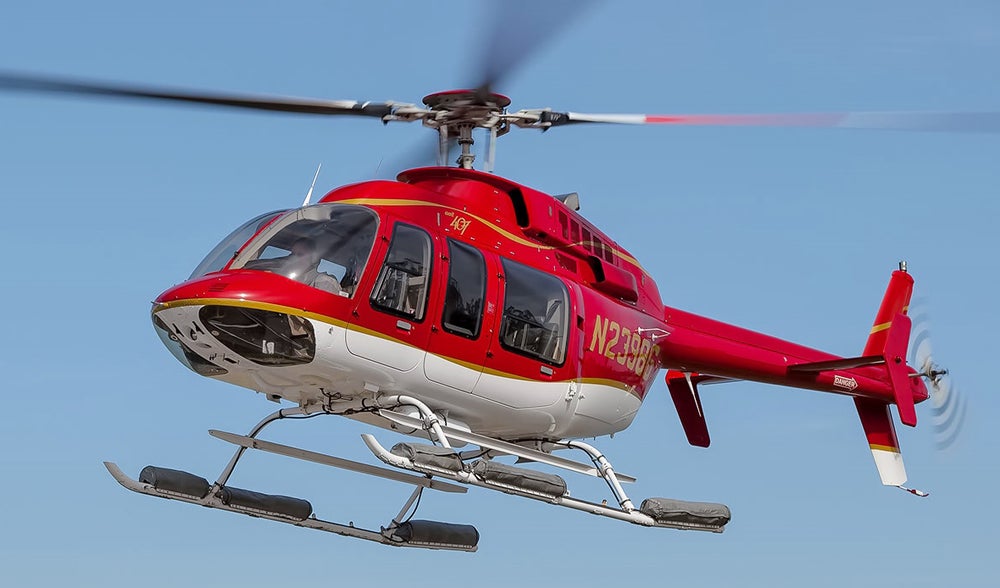
June 29, 1995 – The first flight of the Bell 407, a civil utility helicopter that was derived from the extremely successful !!!error: Indecipherable SUB-paragraph formatting!!! . Where the earlier 206 employed a two-bladed rotor, the 407 makes use of a four-bladed rotor and hub that was developed as part of the US Army’s !!!error: Indecipherable SUB-paragraph formatting!!! program. The composite construction of the rotor blades and hub have no life limits, and a more powerful !!!error: Indecipherable SUB-paragraph formatting!!! engine increases the maximum takeoff weight and improves performance in hotter temperatures and at higher altitudes. Over 1,000 have been built, and the 407 remains in production, proving popular with civil authorities, offshore transport and as an air ambulance. (Photo by stuart.mike via !!!error: Indecipherable SUB-paragraph formatting!!! )
!!! UNKNOWN CONTENT TYPE !!!

June 29, 1963 – The first flight of the Saab 105, a two-seat training aircraft that began as a private venture by Saab in the hopes that the Swedish Air Force would select it to replace the !!!error: Indecipherable SUB-paragraph formatting!!! . Adopted by the Swedish Air Force as the Sk 60, the 105 features side-by-side seating for better communication between the pilots, and despite its original role as a trainer, the 105 can be outfitted with with either ground attack or air-to-air munitions depending on the mission. In addition to the crew of 2, a small bench behind the pilots can accommodate two passengers. Following an engine upgrade, the 105 remains in service with Sweden and Austria, though Sweden is currently investigating a replacement for their older aircraft. Just under 200 were built between 1963-1972. (Photo by Matt Morgan via !!!error: Indecipherable SUB-paragraph formatting!!! )
!!! UNKNOWN CONTENT TYPE !!!
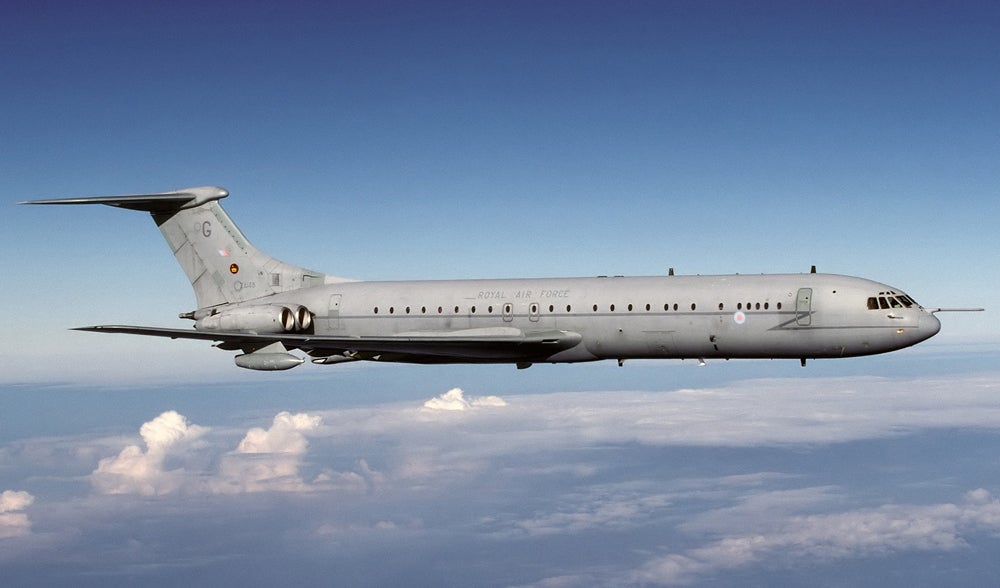
June 29, 1962 – The first flight of the Vickers VC10, a long-range airliner that was developed to operate on long-distance routes while still having the capability to operate from shorter runways and in hotter temperatures than contemporary airliners. The VC10 was powered by 4 !!!error: Indecipherable SUB-paragraph formatting!!! turbofan engines mounted on the tail and, with a top speed of 580 mph, the VC10 holds the record for the fastest atlantic crossing by a subsonic airliner. The VC10 was introduced with !!!error: Indecipherable SUB-paragraph formatting!!! (BOAC) in 1964, and proved enormously popular for its load capabilities, speed, and relative quiet compared to other airliners. The VC10 also served the RAF as a transport, VIP and aerial tanker. A total of 54 were built, and it was retired from RAF service in 2013. (Photo by Chris Lofting via !!!error: Indecipherable SUB-paragraph formatting!!! )
!!! UNKNOWN CONTENT TYPE !!!

June 29, 1900 – The birth of Antoine de Saint-Exupéry, a French author and pilot who is best known for his book Le Petit Prince ( The Little Princ e). Before WWII, Saint-Exupéry was a successful commercial pilot, and flew for the French Air Force in the early part of the war. Following the fall of France, Saint-Exupéry traveled to America to encourage the US to join the war, then joined the !!!error: Indecipherable SUB-paragraph formatting!!! in North Africa, even though his health was failing and he was beyond the age limit for service. Saint-Exupéry disappeared over the Mediterranean Sea on July 31, 1944 while flying a Lockheed F-5B, the unarmed reconnaissance variant of the !!!error: Indecipherable SUB-paragraph formatting!!! , and while remains of a pilot were found, they were not confirmed to be his. (Exupéry photo author unknown)
!!! UNKNOWN CONTENT TYPE !!!
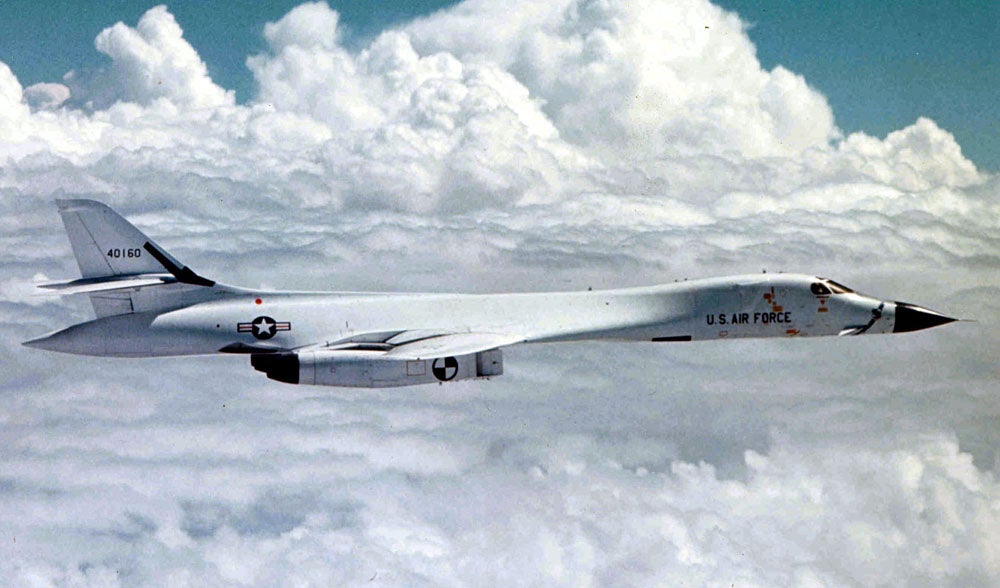
June 30, 1977 – US President Jimmy Carter cancels the Rockwell B-1 Lancer. Following the cancellation of the !!!error: Indecipherable SUB-paragraph formatting!!! program to develop a supersonic successor to the !!!error: Indecipherable SUB-paragraph formatting!!! , the process was restarted under the !!!error: Indecipherable SUB-paragraph formatting!!! and work on the new bomber recommenced. But with the arrival of the !!!error: Indecipherable SUB-paragraph formatting!!! , and its !!!error: Indecipherable SUB-paragraph formatting!!! successor with look-down shoot-down radar, the viability of the new bomber was put into question, and the program was canceled by the !!!error: Indecipherable SUB-paragraph formatting!!! in the face of spiraling budgets and development of !!!error: Indecipherable SUB-paragraph formatting!!! . The program was subsequently restored by the !!!error: Indecipherable SUB-paragraph formatting!!! in 1981, with the development of the more advanced B-1B which first flew in 1974 and remains in service today. (US Air Force photo)
!!! UNKNOWN CONTENT TYPE !!!

June 30, 1956 – Two airliners collide in midair over the Grand Canyon. At approximately 10:30 am, TWA Flight 2, a !!!error: Indecipherable SUB-paragraph formatting!!! en route from Los Angeles to Kansas City collided in midair with United Airlines Flight 718, a !!!error: Indecipherable SUB-paragraph formatting!!! flying from Los Angeles to Chicago, resulting in the deaths of all 128 passengers and crew on both flights. Evidence indicates that at least one of the airliners spotted the other and initiated unsuccessful evasive maneuvers before the aircraft collided, and investigators indicated that the pilots likely did not see each other in time due to clouds, poor cockpit visibility, and high cockpit workload. The crash was the deadliest to date on US soil, and led to the creation of the Federal Aviation Agency (later the !!!error: Indecipherable SUB-paragraph formatting!!! ) in 1958 to give the office total authority over American airspace and spurred the modernization of air traffic control. (Illustration via !!!error: Indecipherable SUB-paragraph formatting!!! )
!!! UNKNOWN CONTENT TYPE !!!
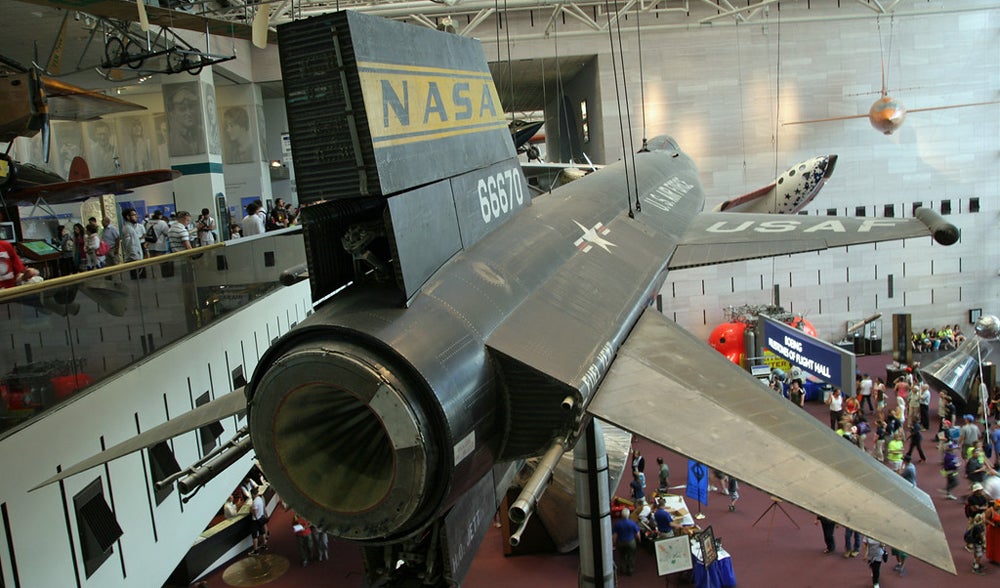
July 1, 1976 – The Smithsonian National Air and Space Museum opens in Washington, DC. Part of the !!!error: Indecipherable SUB-paragraph formatting!!! , the NASM holds the largest collection of historic aircraft and spacecraft in the world and, with 6.7 million visitors in 2014, it is the 5th most-visited museum in the world. In addition to its collection in Wasington DC, the NASM operates the !!!error: Indecipherable SUB-paragraph formatting!!! in Maryland, as well as the !!!error: Indecipherable SUB-paragraph formatting!!! near Dulles Airport that houses more pieces of the vast collection that do not fit in the building on the Washington Mall. (Photo by the author)
!!! UNKNOWN CONTENT TYPE !!!
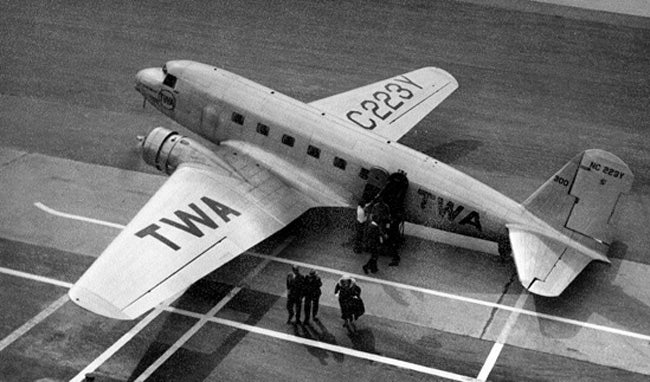
July 1, 1933 – The first flight of the Douglas DC-1, the first model of the DC (Douglas Commercial) airliner series that found its greatest success with the DC-3. Development of the DC-1 began in 1931 after the crash of a !!!error: Indecipherable SUB-paragraph formatting!!! trimotor that suffered a structural failure that was traced to its wooden wings. With Boeing selling its successful !!!error: Indecipherable SUB-paragraph formatting!!! to United, TWA approached Douglas to build an all-metal airliner for them. Though only one DC-1 was built, rigorous testing showed it to be significantly superior to the aircraft it was meant to replace, and it formed the basis for the improved !!!error: Indecipherable SUB-paragraph formatting!!! , which entered service in 1934 with TWA and saw nearly 200 built. (Photo via San Diego Air and Space Museum)
!!! UNKNOWN CONTENT TYPE !!!
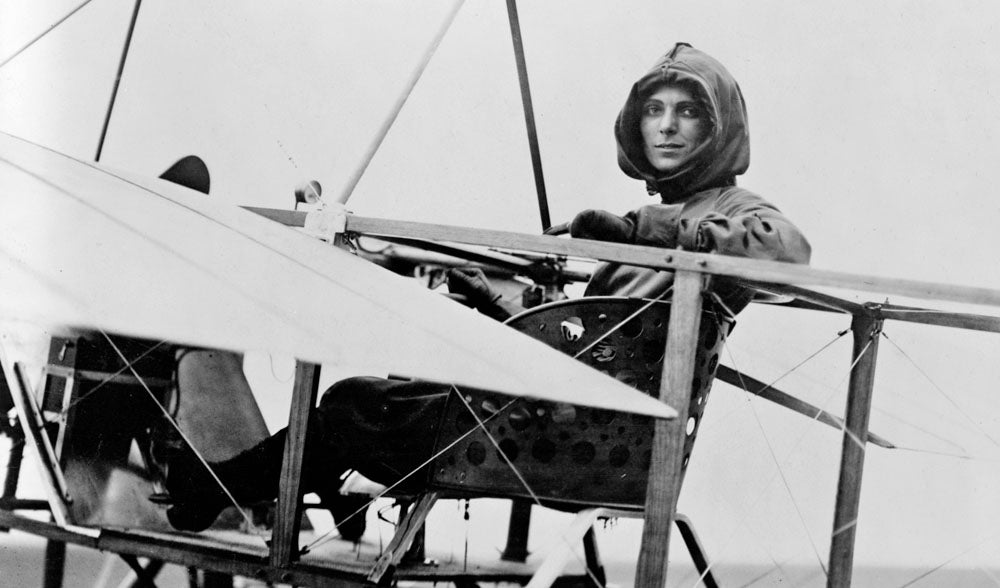
July 1, 1912 – The death of Harriet Quimby. Born on May 11, 1875, Quimby became the first woman to earn a pilot’s license in the United States in 1911, and her exploits were an inspiration to many women of her day who railed against male-dominated society. Quimby was hired as a spokesperson by the Vin Fiz Company and became the first woman to fly across the English Channel in 1912, a feat that was unfortunately overshadowed by news of the sinking of the !!!error: Indecipherable SUB-paragraph formatting!!! just one day later. Quimby was killed during a flight when, for unknown reasons, her !!!error: Indecipherable SUB-paragraph formatting!!! monoplane suddenly pitched forward, ejecting both her and her passenger at an altitude of 1,500 feet. Ironically, the plane came to earth relatively undamaged. (Library of Congress photo)
!!! UNKNOWN CONTENT TYPE !!!

July 1, 1903 – The birth of Amy Johnson (CBE). Johnson was a pioneering British aviatrix and the first female pilot to fly alone from England to Australia, making the 11,000-mile flight in a !!!error: Indecipherable SUB-paragraph formatting!!! named Jason . In 1931, she made another historic flight from London to Moscow with copilot Jack Humphreys in a record time of 21 hours, and made other record-setting flights from England to India and from England to South Africa. During WWII, Johnson served as a pilot for the !!!error: Indecipherable SUB-paragraph formatting!!! , and died on January 5, 1941 after bailing out of her !!!error: Indecipherable SUB-paragraph formatting!!! over the Thames Estuary when the aircraft ran out of fuel. The crew of the HMS Haslemere witnessed the bailout, but she was killed by the ship’s propellers during the rescue attempt. (Johnson photo via British government; photo of Johnson in India by Dabbler via !!!error: Indecipherable SUB-paragraph formatting!!! )
!!! UNKNOWN CONTENT TYPE !!!
Recent Aviation History Posts
!!! UNKNOWN CONTENT TYPE !!!
!!! UNKNOWN CONTENT TYPE !!!
!!! UNKNOWN CONTENT TYPE !!!
!!! UNKNOWN CONTENT TYPE !!!
If you enjoy these Aviation History posts, please let me know in the comments. And if you missed any of the past articles, you can find them all at !!!error: Indecipherable SUB-paragraph formatting!!! .
!!! UNKNOWN CONTENT TYPE !!!
 vondon302
> ttyymmnn
vondon302
> ttyymmnn
07/01/2016 at 12:49 |
|
Damn killed by the ships propellers while trying to rescue her.
Ew
 Smallbear wants a modern Syclone, local Maple Leafs spammer
> ttyymmnn
Smallbear wants a modern Syclone, local Maple Leafs spammer
> ttyymmnn
07/01/2016 at 12:55 |
|
June 29, 1900 – The birth of Antoine de Saint-Exupéry
Not just a pilot/writer, he was a pretty good diplomat as well. When assigned to one of Latécoère Air Lines desert bases (Cape Juby iirc?) he managed to smooth out relations with the Arab nomads (who were notorious for kidnapping and/or murdering pilots who made forced landings) and gain their trust to such a degree that they would seek out his advice in their personal affairs. Most of his writings, if I remember write ( I had to) are based off his experiences flying the desert with “The Line”.
 ttyymmnn
> Smallbear wants a modern Syclone, local Maple Leafs spammer
ttyymmnn
> Smallbear wants a modern Syclone, local Maple Leafs spammer
07/01/2016 at 14:27 |
|
He sounds like a pretty amazing guy all around, one of those people you’d love to have a beer with sometime.
 ttyymmnn
> vondon302
ttyymmnn
> vondon302
07/01/2016 at 14:27 |
|
The ship captain died, too. I think he drowned.